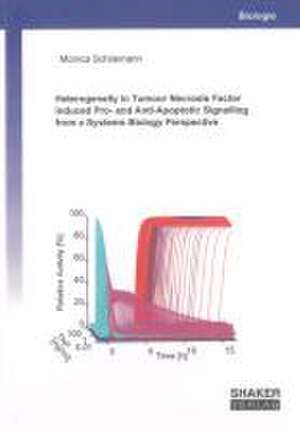Heterogeneity in Tumour Necrosis Factor induced Pro- and Anti-Apoptotic Signalling from a Systems Biology Perspective
Autor Monica Schliemannen Limba Engleză Paperback – 28 feb 2013
Preț: 260.04 lei
Nou
Puncte Express: 390
Preț estimativ în valută:
49.76€ • 51.33$ • 41.52£
49.76€ • 51.33$ • 41.52£
Carte indisponibilă temporar
Doresc să fiu notificat când acest titlu va fi disponibil:
Se trimite...
Preluare comenzi: 021 569.72.76
Specificații
ISBN-13: 9783844017465
ISBN-10: 3844017461
Pagini: 120
Ilustrații: 30 farbige Abbildungen
Dimensiuni: 149 x 212 x 9 mm
Greutate: 0.2 kg
Editura: Shaker Verlag
ISBN-10: 3844017461
Pagini: 120
Ilustrații: 30 farbige Abbildungen
Dimensiuni: 149 x 212 x 9 mm
Greutate: 0.2 kg
Editura: Shaker Verlag
